From embryo to turtle cracker: a team led by palaeobiologist Julia Türtscher from the University of Vienna studied the multiple changes in tooth shape in the tiger shark. The study, recently published in the Journal of Anatomy, is also central in drawing conclusions about extinct species from the myriad of preserved shark teeth in the field of palaeontology.
Tag: University of Vienna
How our brain influences language change
Our language is changing constantly. Researchers of the University of Vienna found that, over centuries, frequently occurring speech sound patterns get even more frequent. The reason for this development is that our brain can perceive, process and learn frequent, and thus prototypical sound patterns more easily than less frequent ones. The results of the study were published in the journal Cognitive Linguistics.
How to decode the meaning of melodies in animal vocalizations
When listening closely, the melodies of human languages and animal vocalizations are very similar. However, it is not yet fully resolved if similar patterns in languages and animal vocalizations also have similar meanings. Researchers of the University of Vienna present a new method to decode the meaning of animal vocalizations: the comparison of their melodies with human languages.
A new dimension in magnetism and superconductivity launched
An international team of scientists from Austria and Germany has launched a new paradigm in magnetism and superconductivity, putting effects of curvature, topology, and 3D geometry into the spotlight of next-decade research. The results are published in Advanced Materials
Profound ecological change in the Eastern Mediterranean Sea
Assemblages of tropical non-indigenous species in the Eastern Mediterranean have biological traits that markedly differ from those of native biological communities. This was shown by an international team of scientists led by Jan Steger from the Department of Palaeontology at the University of Vienna.
Why do humans possess a twisted birth canal?
The relatively narrow human birth canal presumably evolved as a “compromise” between its abilities for parturition, support of the inner organs, and upright walking. But not only the size of the birth canal, also its complex, “twisted” shape is an evolutionary puzzle.
Molecular burdocks: peptides guide self-assembly on the micrometre scale
Sometimes even small forces can make comparatively big things happen: In a study in “Angewandte Chemie”, scientists from the Faculty of Chemistry at the University of Vienna showed how short peptides can trigger the self-assembly of comparatively large nanoparticles into new structures on the micrometre scale.
Synchrony through touch
Touch is fundamental to interpersonal communication. Until recently, it was unclear how affectionate touch and physical contact affect the brain activity and heart rhythms of mothers and babies. Developmental psychologists Trinh Nguyen and Stefanie Höhl from the University of Vienna have investigated this question in a recent study.
Gut bacteria influence brain development
Extremely premature infants are at a high risk for brain damage. Researchers at the University of Vienna and the Medical University of Vienna have now found possible targets for the early treatment of such damage outside the brain: Bacteria in the gut of premature infants may play a key role. The research team found that the overgrowth of the gastrointestinal tract with the bacterium Klebsiella is associated with an increased presence of certain immune cells and the development of neurological damage in premature babies. The study is now published in journal Cell Host & Microbe.
Researchers find a way to check that quantum computers return accurate answers
Quantum computers become ever more powerful, but how can we be sure that the answers they return are accurate? A team of physicists from Vienna, Innsbruck, Oxford, and Singapore solves this problem by letting quantum computers check each other.
Modeling uncovers an “atomic waltz” for atom manipulation
Researchers at the University of Vienna’s Faculty of Physics in collaboration with colleagues from the Oak Ridge National Laboratory in the USA have uncovered a non-destructive mechanism to manipulate donor impurities within silicon using focused electron irradiation.
Emergent magnetic monopoles controlled at room temperature
Three dimensional (3D) nano-network promise a new era in modern solid state physics with numerous applications in photonics, bio-medicine, and spintronics. The realization of 3D magnetic nano-architectures could enable ultra-fast and low-energy data storage devices. Due to competing magnetic interactions in these systems magnetic charges or magnetic monopoles can emerge, which can be utilized as mobile, binary information carriers.
Integrate disciplines to conserve biodiversity
Innovation arises through the transfer of research results into practiceValuable research results threaten to gather dust in university libraries if they are not put into practice. While transdisciplinary research seems to become increasingly important in sciences, funding programs and media, there are still many misunderstandings to be clarified.
From chemical Graphs To Structures
Three-dimensional (3D) configurations of atoms dictate all materials properties. Quantitative predictions of accurate equilibrium structures, 3D coordinates of all atoms, from a chemical graph, a representation of the structural formula, is a challenging and computationally expensive task which is at the beginning of practically every computational chemistry workflow.
Attachment style secures your love during lockdowns
What constitutes good relationship quality in times of crisisRelationships are crucial for our health and well-being. But which factors help to sustain a satisfying relationship, and can we predict which relationships make it through a crisis? An international team led by Stephanie Eder of the University of Vienna set out to investigate these questions during a time when ‘hard lockdowns’ were introduced throughout Europe.
Bacterial survival kit to endure in soil
Soils are one of the most diverse habitats on the planet. There are more than thousand microbial species per gram that significantly influence numerous environmental processes. However, the majority of these organisms are believed to be in a state of ‘dormancy’ due to environmental stress, such as nutrient-poor conditions. An international team of scientists led by Dagmar Woebken and Stephanie A. Eichorst from the University of Vienna investigated how acidobacteria, which are widespread in soils, can survive under adverse conditions. Two recent studies published in “The ISME Journal” and “mSystems” describe these survival strategies.
The evolution of axial patterning
Body axes are molecular coordinate systems along which regulatory genes are activated. These genes then activate the development of anatomical structures in correct locations in the embryo. Thus, the body ensures that we do not develop arms on our heads or ears on our backs. In many organisms, the main body axis is regulated by the β-catenin signaling pathway. In a new article in Nature Communications, a research group led by Grigory Genikhovich at the University of Vienna has found that the way the main body axis of sea anemones is patterned by different intensities of β-catenin signaling is similar to that of sea urchins and vertebrates. This suggests that this axial patterning mechanism already existed about 650 million years ago.
Asian elephants do more than just trumpet- they buzz their lips to squeak
Communication is crucial for elephants that live in complex multi-tiered social systems. Apart from their iconic trumpets uttered through the trunk, Asian elephants also produce species-specific squeaks by buzzing their lips. This demonstrates once again the elephant’s flexibility in sound production.
Atomic-scale tailoring of graphene approaches macroscopic world
Properties of materials are often defined by imperfections in their atomic structure, especially when the material itself is just one atom thick, such as graphene. Researchers at the University of Vienna have now developed a method for controlled creation of such imperfections into graphene at length scales approaching the macroscopic world. These results, confirmed by atomically resolved microscope images and published in the journal Nano Letters, serve as an essential starting point both for tailoring graphene for applications and for the development of new materials.
Quantum-nonlocality at all speeds
The phenomenon of quantum nonlocality defies our everyday intuition. It shows the strong correlations between several quantum particles some of which change their state instantaneously when the others are measured, regardless of the distance between them. While this phenomenon has been confirmed for slow moving particles, it has been debated whether nonlocality is preserved when particles move very fast at velocities close to the speed of light, and even more so when those velocities are quantum mechanically indefinite.
Making a meal of DNA in the seafloor
While best known as the code for genetic information, DNA is also a nutrient for specialised microbes. An international team of researchers led by Kenneth Wasmund and Alexander Loy from the University of Vienna has discovered several bacteria in sediment samples from the Atlantic Ocean that use DNA as a food source.
Bacteria hijack latent phage of competitor
Bacteriophages are still a relatively unknown component of the human microbiome. However, they can play a powerful role in the life cycles of bacteria. Biochemist Thomas Böttcher from the University of Vienna and PhD student Magdalena Jancheva were able to show for the first time how Pseudomonas bacteria use a self-produced signal molecule to selectively manipulate phages in a competing bacterial strain to defeat their enemy. This targeted control of phages provides entirely new biotechnological and therapeutic approaches, e.g. for phage therapies. The results produced in the context of an ERC grant have been published in the “Journal of the American Chemical Society”.
Meiosis: Mind the gap
Meiosis is a specialized cell division process required to generate gametes, the reproductive cells of an organism. During meiosis, paternal and maternal chromosomes duplicate, pair, and exchange parts of their DNA in a process called meiotic recombination. In order to mediate this exchange of genetic material, cells introduce double strand breaks (DSBs) into their chromosomal DNA. Scientists from the lab of Franz Klein from the Department of Chromosome Biology at the Max Perutz Labs, a joint venture of the University of Vienna and the Medical University of Vienna, have now discovered that cells sometimes liberate DNA fragments at sites of paired, or double, DSBs. Whilst this presents an obvious risk of germline mutations as a consequence of erroneous repair or of integration of fragments from elsewhere at break sites, it may also be a source of evolutionary diversity. The study is published as a research article in Nature.
DNA-based material with tunable properties
While DNA is often idealised as the molecule of life, it is also a highly sophisticated polymer that can be used for next-generation materials. Beyond the fact that it can store information, further fascinating aspects of DNA are its geometric and topological properties, such as knotting and super-coiling. Indeed, very much like a twisted telephone cord, DNA is often found coiled up inside bacteria and other cells and even knotted in viruses.
Crystalline supermirrors for trace gas detection in environmental science and medicine
In an international cooperation with partners from industry and research, physicists from the University of Vienna, together with Thorlabs, the National Institute of Standards and Technology (NIST), and the University of Kansas, have now succeeded for the first time in demonstrating high-performance laser mirrors in the sensing-relevant mid-infrared wavelength range that absorb less than ten out of a million photons.
New ancient shark discovered
In a new study, an international team led by Sebastian Stumpf from the University of Vienna describes a fossil skeleton of an ancient shark, which is assigned to a new, previously unknown genus and species. This rare fossil find comes from the Kimmeridge Clay Formation in England, a series of sedimentary rocks that was formed in a shallow, tropical-subtropical sea during the Upper Jurassic, about 150 million years ago. The fossil shark skeleton was found more than 20 years ago on the southern coast of England and is now held in the Etches Collection. Additional fossil shark specimens from it will be investigated in the years to come.
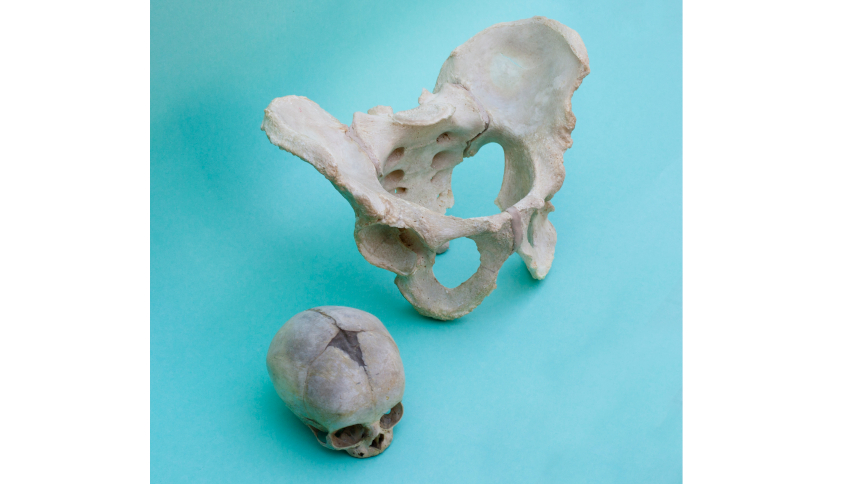
Where do the gender differences in the human pelvis come from?
The pelvis is the part of the human skeleton with the largest differences between females and males. The female birth canal is on average more spacious and exhibits shape features that enable birth of a large baby with a big brain. In forensics, these pelvic differences are used for sex identification of human skeletons. Thus far it was unclear when these pelvic differences first appeared in human evolution. Barbara Fischer from the University of Vienna and her coauthors have published a study in Nature Ecology & Evolution presenting new insights into the evolutionary origin of pelvic sex differences.
Agricultural biodiversity:
To minimize negative impacts of agriculture on biodiversity and related ecosystem services, “biodiversity-friendly” management is needed. Why scientific results are rarely translated into agricultural practice could be explained by their different perceptions of agricultural biodiversity, according to the results of a recent survey of European scientists and farmers.

Fossilized feeding frenzy:
An international team of scientists with Fridgeir Grímsson from the University of Vienna has found a previously unknown fossil fly species in old lake sediments of the Messel Pit, a UNESCO World Heritage Site in Germany. In the stomach of the fossil insect, pollen from various plants could be detected, which allows rare insights into the feeding behavior, the ecology and the role of the fly as a pollinator.
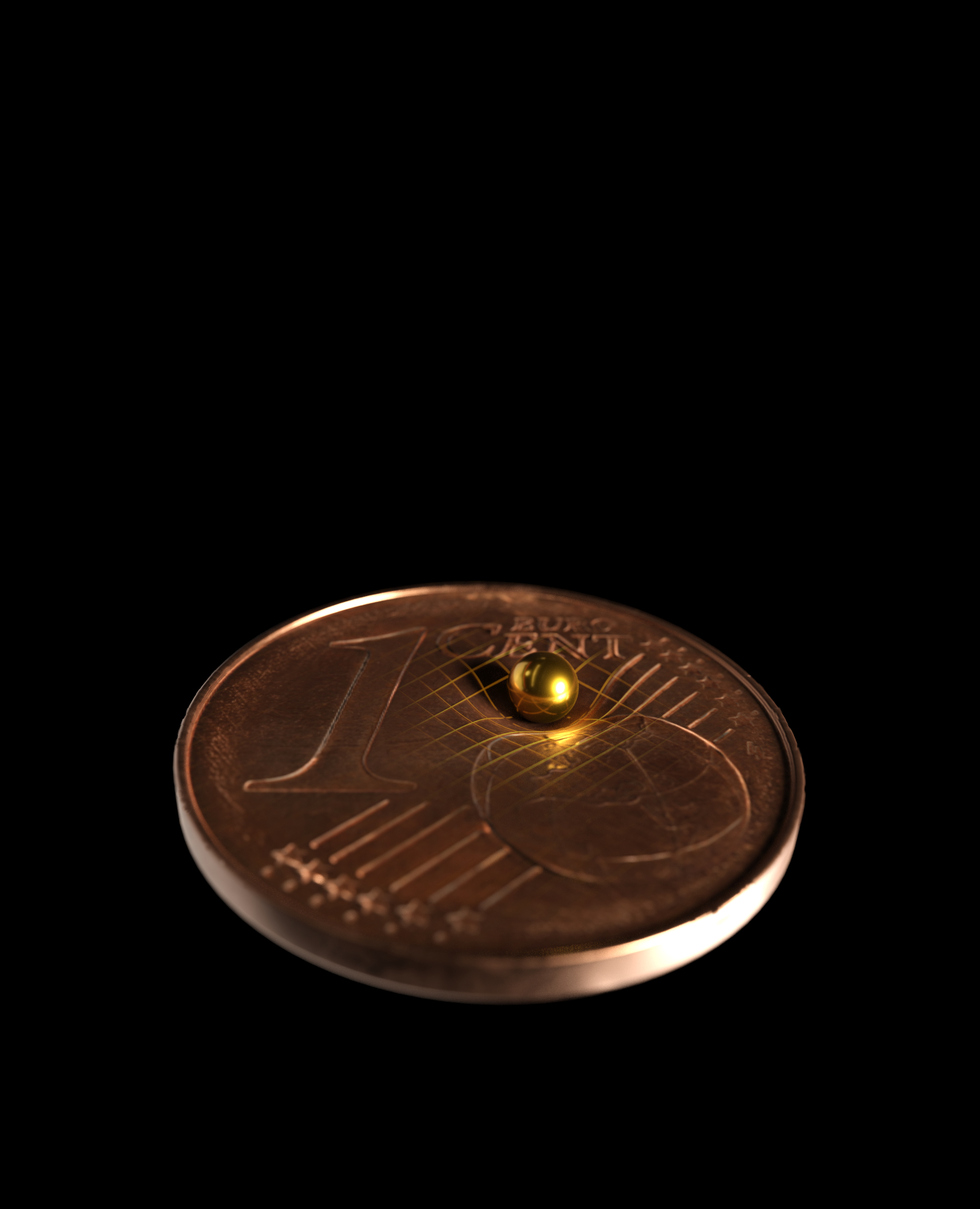
How a ladybug warps space-time
Researchers at the University of Vienna and the Austrian Academy of Sciences, led by Markus Aspelmeyer have succeeded in measuring the gravitational field of a gold sphere, just 2 mm in diameter, using a highly sensitive pendulum – and thus the smallest gravitational force. The experiment opens up new possibilities for testing the laws of gravity on previously unattained small scales. The results are published in the journal Nature.
Promising metallodrug candidate for tumour therapy
BOLD-100/KP1339 is a ruthenium-based anticancer agent that has been decisively co-developed at the University of Vienna and which has shown promising results in clinical trials in cancer patients. However, the mode of action of this metal compound has not yet been fully elucidated. Researchers from the University of Vienna and the Medical University of Vienna have now been able to demonstrate that BOLD-100 binds to ribosomal proteins in tumour cells. The study now published with a cover in “Angewandte Chemie” can support a more targeted application of BOLD-100 as tumour-inhibiting active agent.
Lack of diversity in science
Women and the Global South are strikingly underrepresented
Most publications in leading scientific journals are by male authors from English-speaking countries. This changes only slowly, according to a recent study on diversity in top authorship, concludes Bea Maas from the University of Vienna. Her new study examines the (non-existent) diversity in top authorship in science.
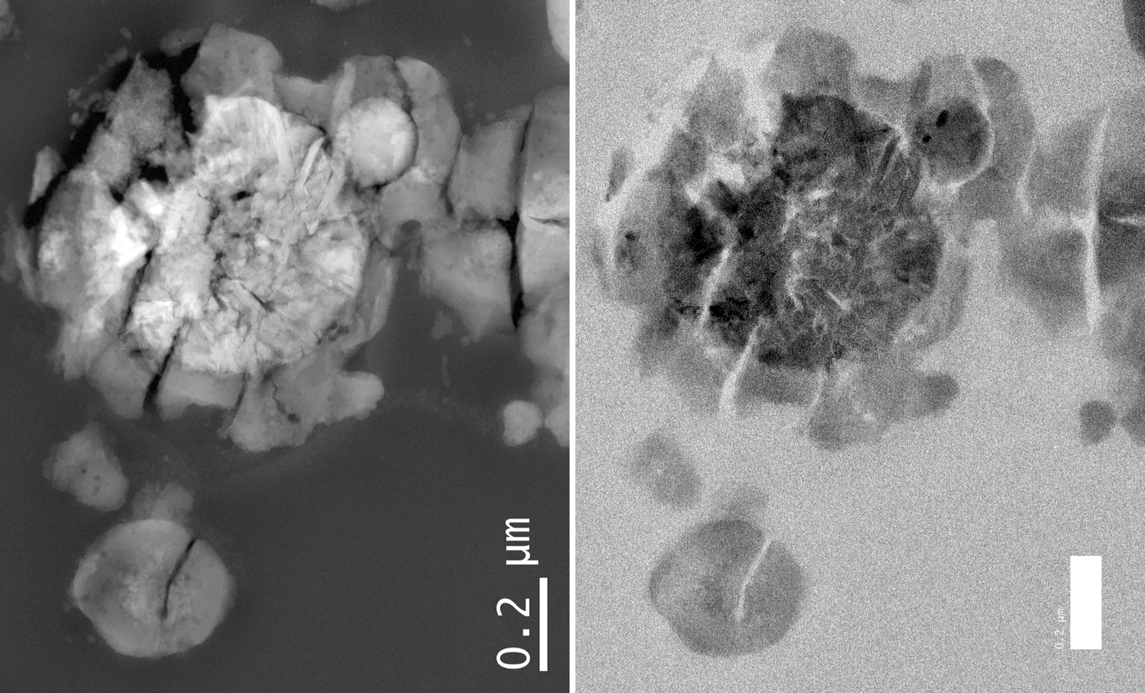
Life of a pure Martian design
Experimental microbially assisted chemolithotrophy provides an opportunity to trace the putative bioalteration processes of the Martian crust. A study on the Noachian Martian breccia Northwest Africa (NWA) 7034 composed of ancient (ca. 4.5 Gyr old) crustal materials from Mars, led by ERC grantee Tetyana Milojevic from the Faculty of Chemistry of the University of Vienna, now delivered a unique prototype of microbial life experimentally designed on a real Martian material. As the researchers show in the current issue of “Nature Communications Earth and Environment”, this life of a pure Martian design is a rich source of Martian-relevant biosignatures.
Quantum effects help minimise communication flaws
Noise limits the performance of modern quantum technologies. However, particles traveling in a superposition of paths can bypass noise in communication. A collaboration between the Universities of Hong-Kong, Grenoble and Vienna, as well as the Austrian Academy of Sciences, under the lead of Philip Walther, reveals novel techniques to reduce noise in quantum communication.
The therapeutic potential of peptides
Animal venoms as natural resource for new drugs. Currently, there are more than 80 peptide drugs on the global market and about twice as many in clinical development. Due to their beneficial properties, these biomolecules play already an important role in the treatment of diseases such as diabetes, cancer, hormone disorders, HIV infection, and multiple sclerosis.
Marmoset monkeys have personalities too
In humans, differences in personalities have been evident since the ancient times. Personality in animals has long been ignored, but recently this question has received increasing research interest as it has been realized that personality has evolutionary and ecological significance. An international team of behavioral biologists from Austria, Brazil and the Netherlands, with Vedrana Šlipogor from the University of Vienna as leading author of the study, designed a set of tasks to assess personality of common marmosets.
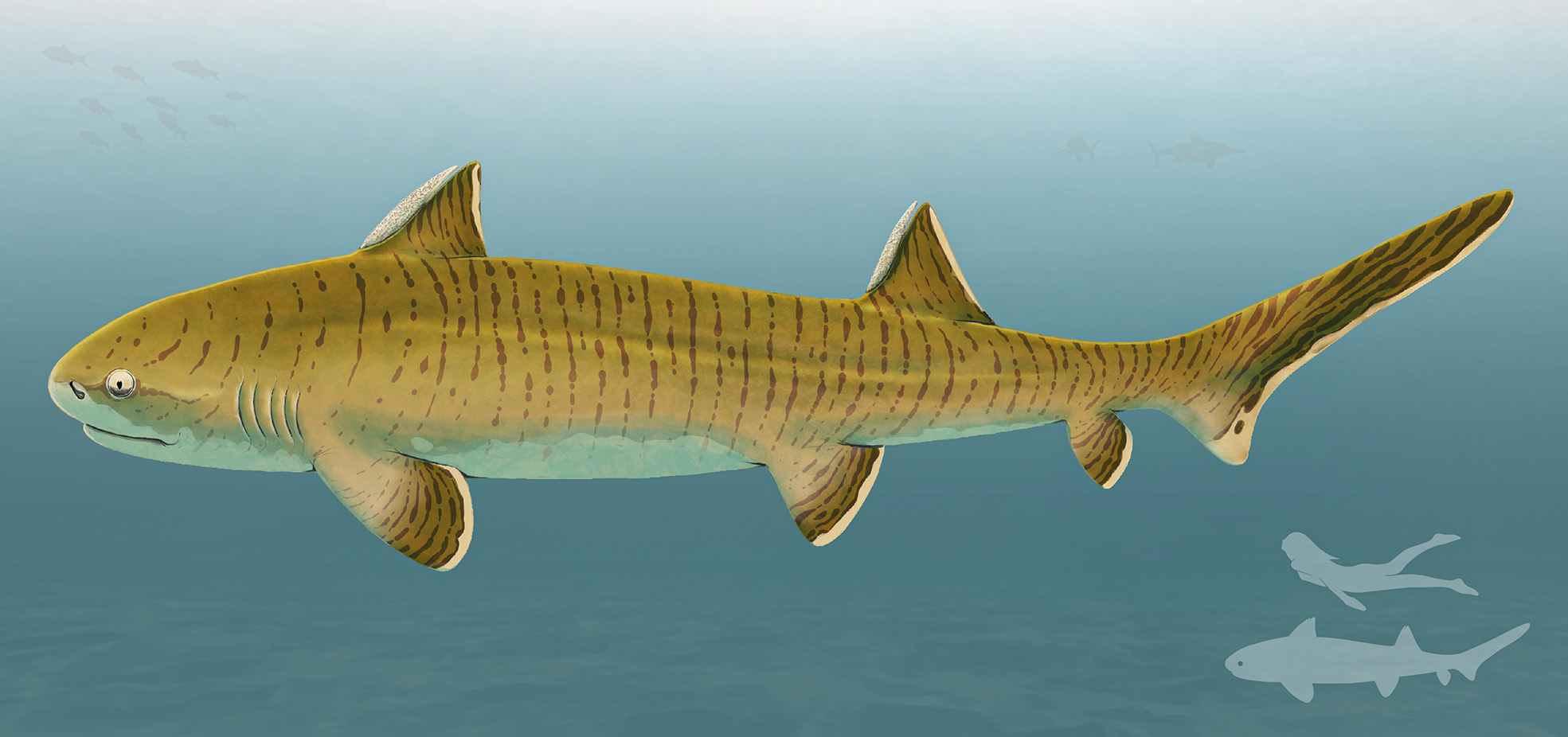
Spectacular fossil discovery: 150 million-year-old shark was one of the largest of its time
In a new study, an international research team led by Sebastian Stumpf from the University of Vienna describes an exceptionally well-preserved skeleton of the ancient shark Asteracanthus. This extremely rare fossil find comes from the famous Solnhofen limestones in Bavaria, which was formed in a tropical-subtropical lagoon landscape during the Late Jurassic, about 150 million years ago.
More than just a sun tan: ultraviolet light helps marine animals to tell the time of year
Changes in daylength are a well-established annual timing cue for animal behavior and physiology. An international collaboration of scientists led by Kristin Tessmar-Raible at the Max Perutz Labs, a joint venture of the University of Vienna and the Medical University of Vienna, now shows that, in addition to daylength, marine bristle worms sense seasonal intensity changes of UVA/deep violet light to adjust the levels of important neurohormones and their behavior.
Unusual sex chromosomes of platypus, emu and duck
Three papers unveil the extraordinary diversity of animal sex chromosomesThe sex chromosomes genetically define the developmental fate of an embryo to become a male or a female individual, and usually appear as one pair of morphologically different chromosomes between sexes. For example, women have one pair of XX chromosomes, while men have one pair of XY chromosomes.
Environmental exposures affect therapeutic drugs
High-resolution mass spectrometry promotes new methods for analysis. Humans are exposed to various environmental or dietary molecules that can attenuate or even increase the effect of therapeutic drugs. Studies on the industrial chemical bisphenol A and the phytoestrogen genistein, for example, have shown drug-exposome interactions.
Sweet taste reduces appetite?
The sweet taste of sugar, energy intake and the regulatory process of hunger and satietyTo date, very little is known about how sweetness perception contributes to satiety. This study, conducted by an Austrian-German team led by chemists Veronika Somoza and Barbara Lieder, provides new insights into the relationship between the sweet taste of sugar, energy intake and the regulatory process of hunger and satiety.

Microbial space travel on a molecular scale
Galactic cosmic and solar UV radiation, extreme vacuum, temperature fluctuations: how can microbes exposed to these challenges in space survive? An international team around Space Biochemistry group at the University of Vienna investigated how the space-surviving microbes could physically survive the transfer from one celestial body to another.
Producing leather-like materials from fungi
Leather is used as a durable and flexible material in many aspects of everyday life including furniture and clothing. Leather substitutes derived from fungi are considered to be an ethical and environmentally friendly alternative to traditional bovine leather. An international team led by material chemists Alexander Bismarck and Mitchell Jones from the University of Vienna demonstrate the considerable potential of these renewable sustainable fabrics derived from fungi in their latest review article in “Nature Sustainability”.
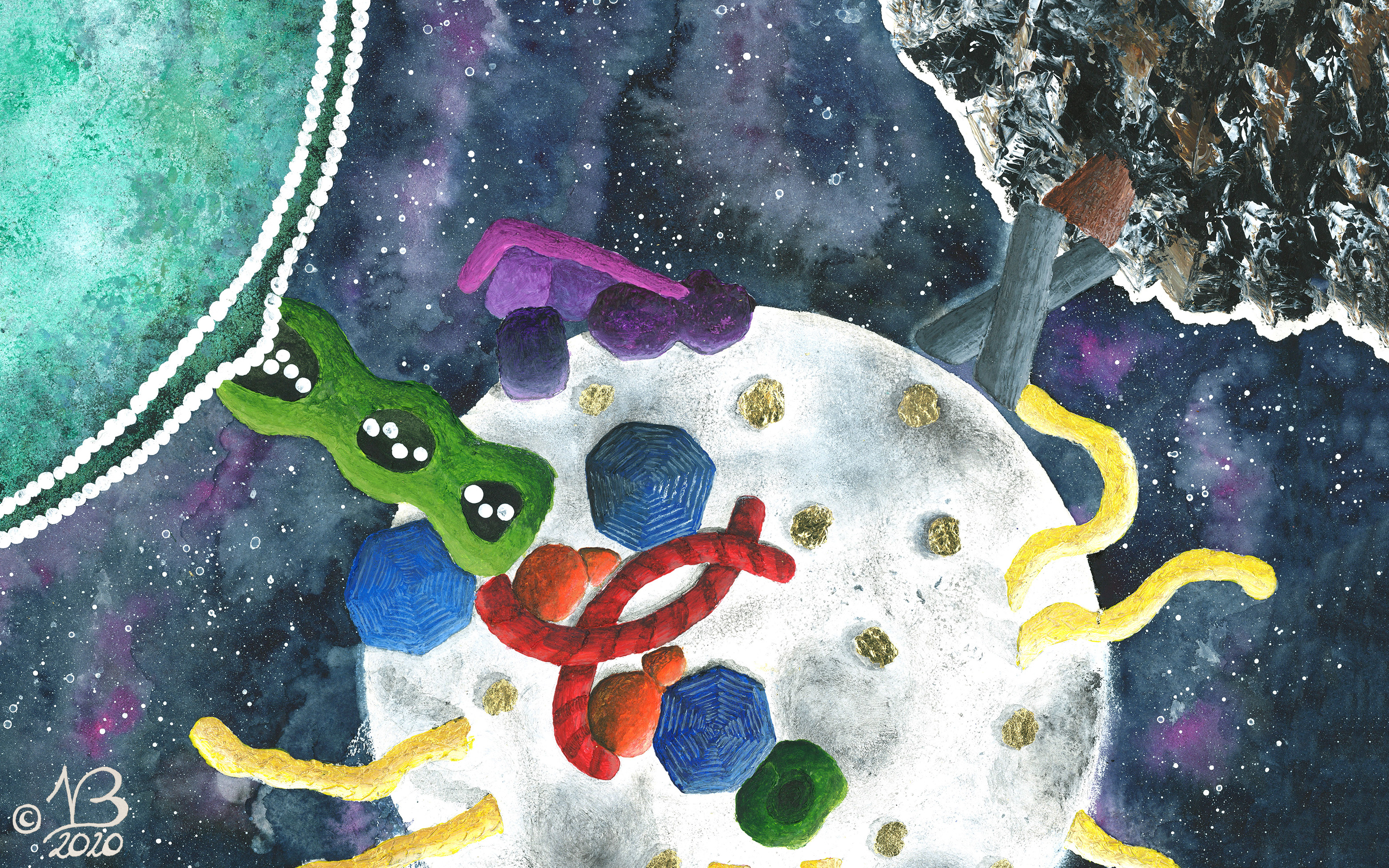
Autophagy: the beginning of the end
Autophagy, from the Greek for ‘self-eating’, is an essential process that isolates and recycles cellular components under conditions of stress or when resources are limited. Cargoes such as misfolded proteins or damaged organelles are captured in a double membrane-bound com-partment called the autophagosome and targeted for degradation.
Searching for stress-resistant potatoes
Plant Biologist Markus Teige at the Faculty of Life Sciences of the University of Vienna has received a €5 million grant from the Horizon 2020 EU Program to study mechanisms how potato’s adapt to multiple environmental stresses. He coordinates a consortium of 17 European leading academic research institutions, potato breeders, a non-profit EU association, a government agency and a screening technology developer.
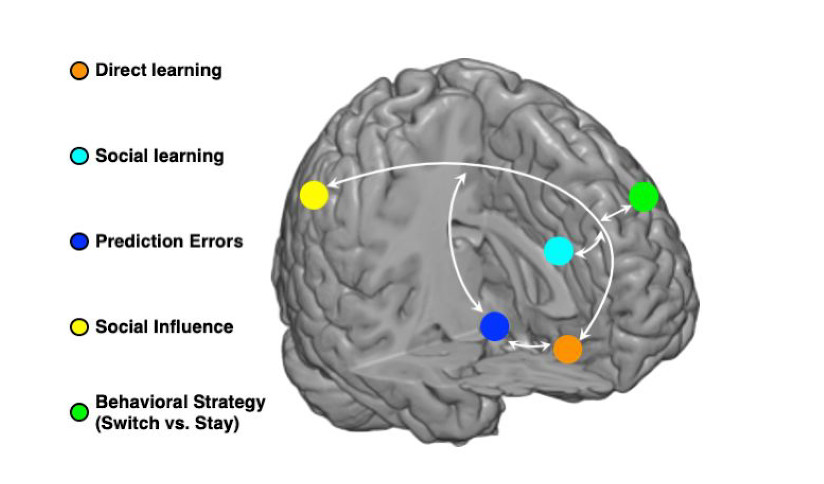
When learning on your own is not enough
We make decisions based on not only our own learning experience, but also learning from others. But with the presence of other people’s choices, how do we learn from them to better inform our own learning? Is social learning processed differently from direct learning? In a new study, published in “Science Advances”, neuroscientist Lei Zhang of the University of Vienna provides empirical evidence that there are parallel computations for direct learning and social learning and they are carried out in distinct but interacting regions in the brain.
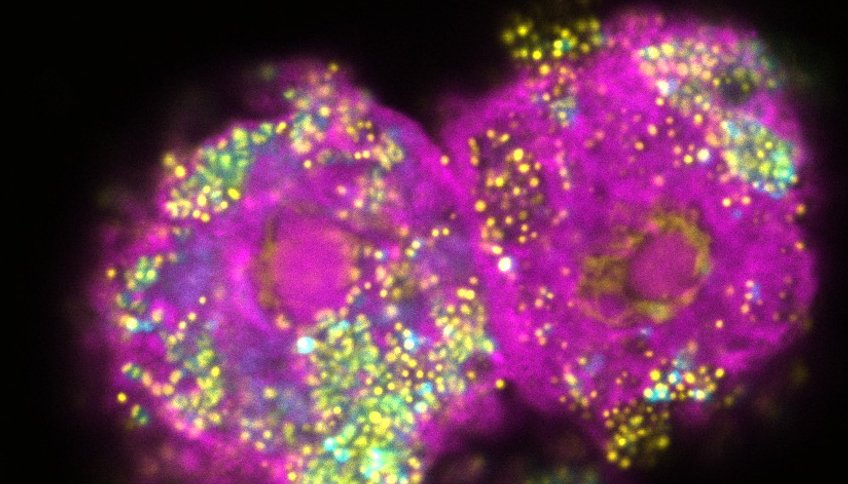
Evolution in real-time: How bacteria adapt to their hosts
Some bacteria become increasingly infectious when they have to move from cell to cell in order to survive. Bacteria that invade animal cells in order to multiply are widespread in nature. Some of these are pathogens of humans and animals. In the environment, they are often found inside unicellular organisms. A research team led by Matthias Horn at the Centre for Microbiology and Environmental Systems Science at the University of Vienna has made use of laboratory experiments to gain a better understanding of how these bacteria adapt to their host cell over time and become increasingly infectious under certain conditions.

Between shark and ray: The evolutionary advantage of the sea angels
Angel sharks are sharks, but with their peculiarly flat body they rather resemble rays. An international research team led by Faviel A. López-Romero and Jürgen Kriwet of the Institute of Palaeontology has now investigated the origin of this body shape. The results illustrate how these sharks evolved into highly specialised, exclusively bottom-dwelling ambush predators and thus also contribute to a better understanding of their threat from environmental changes.

Material and genetic resemblance in the Bronze Age Southern Levant
Different “Canaanite” people from the Bronze Age Southern Levant not only culturally, but also genetically resemble each other more than other populations. A team around Ron Pinhasi from the Department of Evolutionary Anthropology found in a recent study that their DNA is a mixture of two populations: The Chalcolithic Zagros and Early Bronze Age Caucasus. The results have been published in “Cell”.
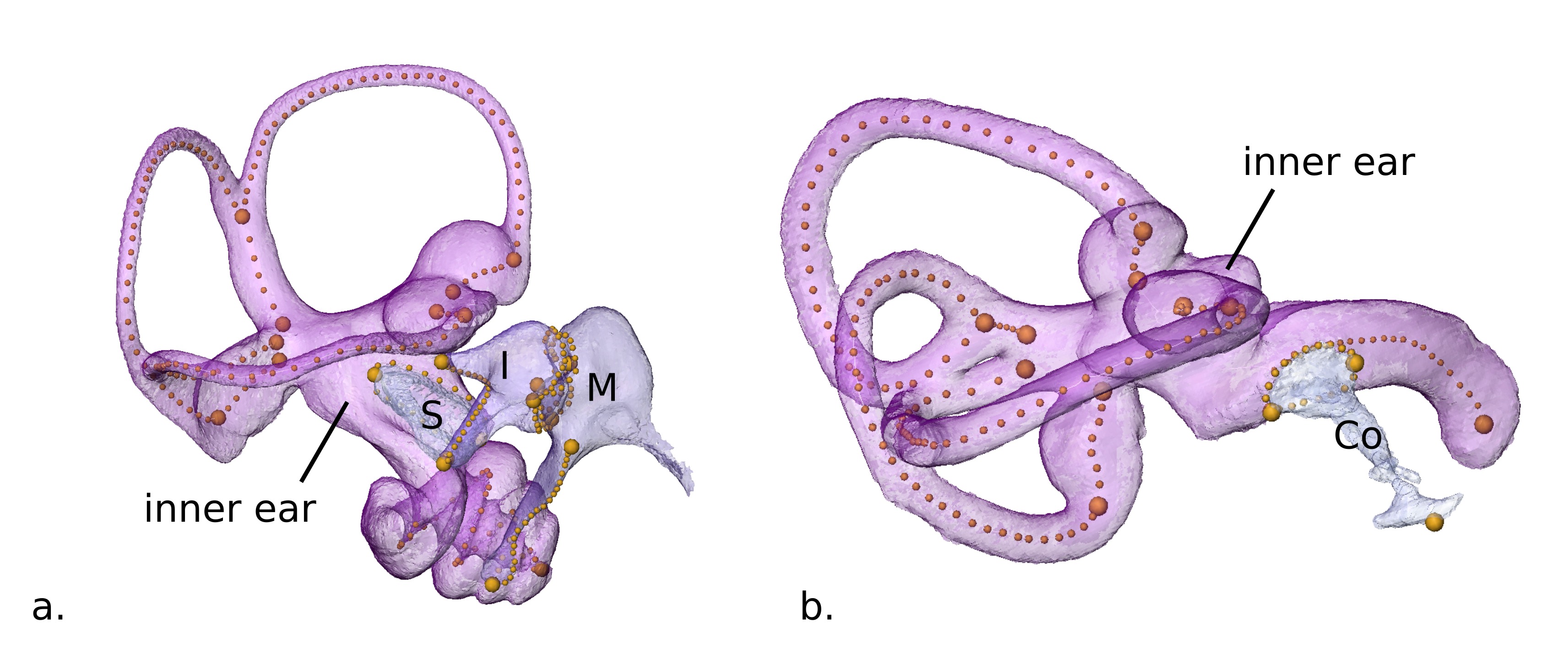
The evolutionary puzzle of the mammalian ear
How could the tiny, tightly connected parts of the ear adapt independently to the amazingly diverse functional and environmental regimes encountered in mammals? A group of researchers from the University of Vienna and the Konrad Lorenz Institute for Evolution and Cognition Research proposed a new explanation for this evolutionary puzzle.